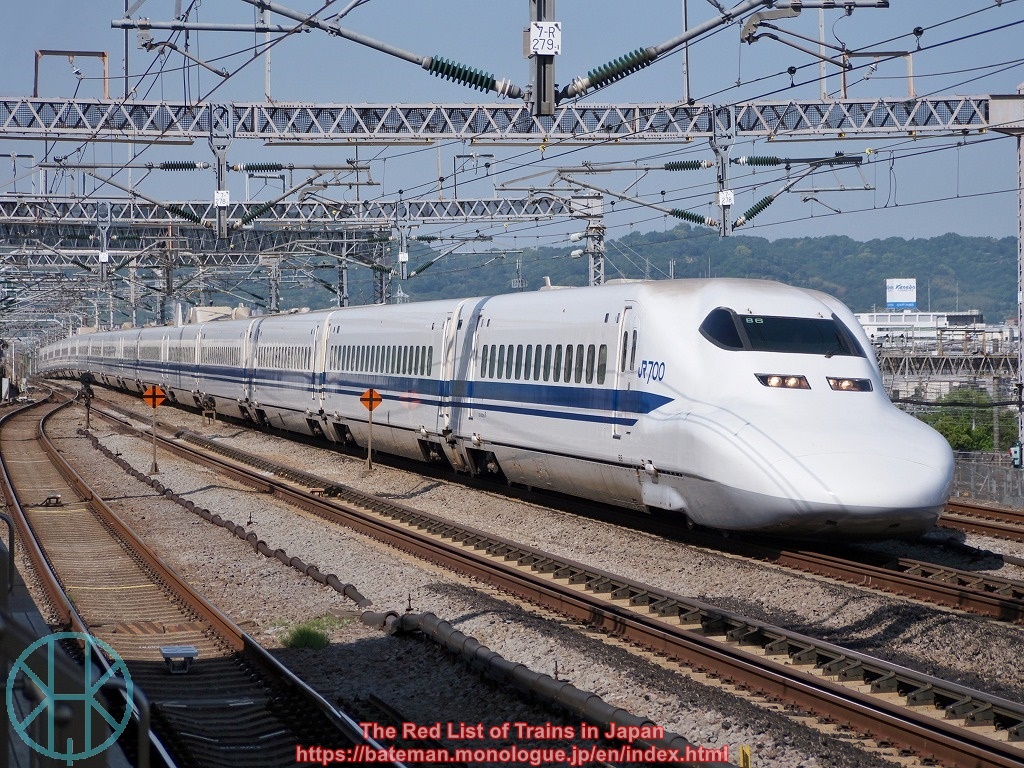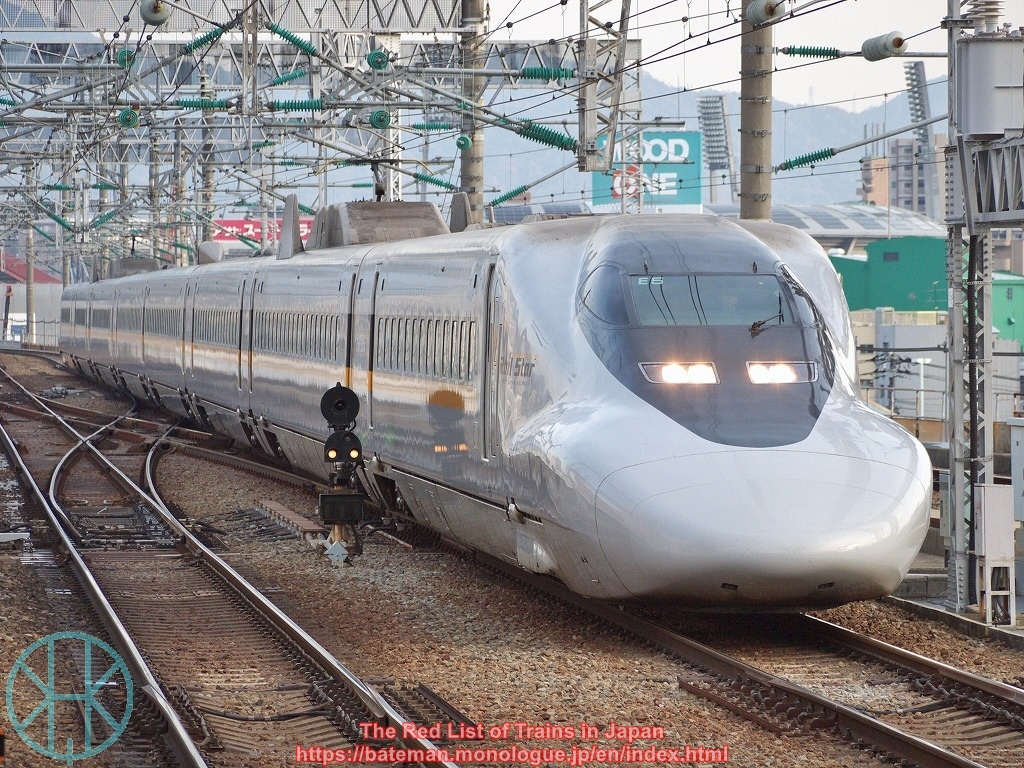700 series Bullet Train

Data (as of 29 Nov 2025)
| Status: | Endangered (JR West) |
| Extinct (JR Central) | |
| Constructed in: | 1997-2006 |
| Number built: | 1,328 |
| Registered: | 128 |
History
The 700 series was developed to replace 0 series and 100 series, making all trains on Tokaido Shinkansen capable of running at 270 km/h (168 mph). JR West introduced 500 series which ran at 300 km/h (187 mph), but they were expensive and not comfortable. Thus, JR Central decided to mass-produce slower but less costly bullet trains, which consist of 16 coaches. The maximum speed of the 700 series is 285 km/h (177 mph), slightly less than the 500 series, but still far faster than 0 and 100 series.
JR West introduced the 16-carriage 700 series from 2001, replacing 100 series for Grand Hikari services. In addition, JR West introduced eight-car units in 2000 to Hikari Rail Star, semi-fast services between Shin-Osaka and Hakata.
The 16-car units were initially used for Nozomi services, but gradually shifted to Hikari and Kodama services following the introduction of N700 series, and JR Central withdrew all 700 series in 2020. JR West retained one unit even after 2020, and intended to use it for rail tours and seasonal services for a few more years, but the company finally scrapped it due to a sharp drop in demand caused by COVID-19 pandemic.
THSR 700T, a high-speed train in Taiwan, is based on the 700 series.
Current Operations & Future Prospects
JR West has eight-car units, using them mainly for Kodama on San-yo Shinkansen. The stopping services in the area are mostly served by the 700 series. All remaining units are due to be replaced with shortened-N700 series by financial year 2027.
Photo

Hikari Rail Star units are painted grey and black with amber bands.
(Updated: 29 Nov 2025)
